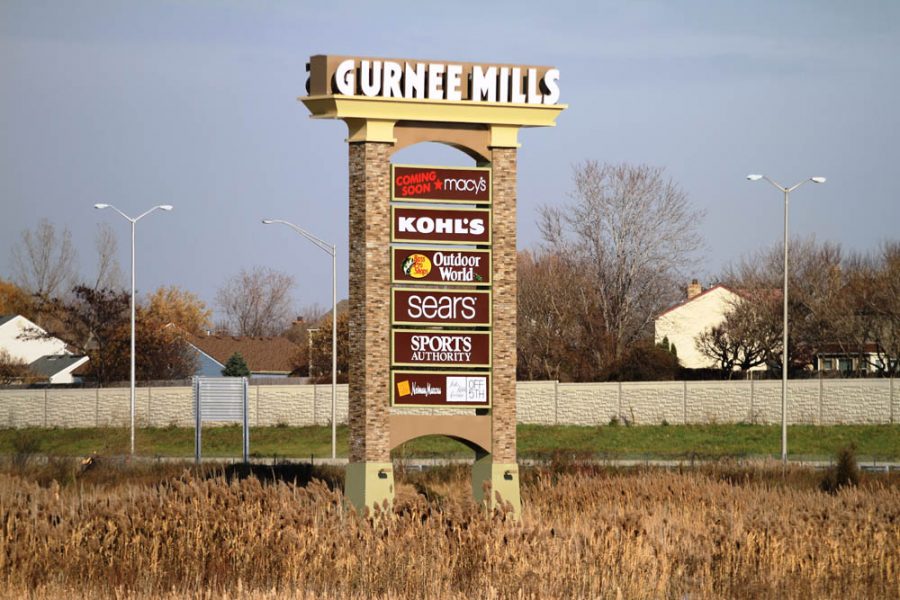Malls in America: Will Modernizing Work?
November 26, 2017
In 1956 just south of the U.S’s most famous mall in Mall of America, American history was made. The Southdale Center in Edina, Minnesota became the first fully enclosed shopping mall in the U.S as we know them today. While subsequent decades saw hundreds of malls spring up across the U.S, mall popularity may have waned enough to be considered a flash in the historical pan. The last major mall construction in the United States began over a decade ago in 2006. Since Gurnee Mills is the linchpin of the Gurnee economy, our community should be wary of the dire straits American malls may imminently find themselves in.
Malls are usually constructed with “anchor stores” featured on opposite sides of the complex; Big Box stores like Sears, Macy’s, and JCPenney reel in costumers, and smaller stores benefit when shoppers meander through the entire mall. With the extraordinary growth of e-commerce, specifically Amazon, brick-and-mortar stores are losing their ability to supply consumers with the greatest selection and flexibility. Mobile e-commerce has grown 1000% since 2010 (from 2% of all e-commerce to the 20% it’s at today) due to streamlined and widely-available apps. Meanwhile, e-commerce in general has flourished under two-day shipping and hassle-free returns. The aftershocks of the Great Recession are probably not to blame for middle-class malls’ struggles since the private sector and lower to middle-class wages have improved steadily for several years. The writing on the wall is becoming more transparent: the malls that will survive the projected 25% closing of all American malls by 2022 will be the ones that provide a “premium experience.”
Our generation, (appropriately?) labeled iGen, is said to scope out locations that provide rich, sensory experiences conducive to social media posts. According to experts who study this field, top-tier restaurants and tech stores are the two driving forces that draw teens and young adults to malls. The established pattern is that young people prefer to spend money on tech gear rather than apparel, so it’s no wonder that Chicagoland Apple Stores and new restaurants are the talks of the town. Key Gurnee players noticed this trend and are revving up to change with the times. The Village of Gurnee is prepared to contribute up to a million dollars of the six million dollar price tag for the Gurnee Mills Renovation Plan. Simon Property Group, Gurnee Mills’s parent company, intends to install LED lights and bring in more natural lighting alongside updated food courts to the mall. Comfy lounging areas replete with charging centers are also among the renovations scheduled to be completed early next year. While anchor stores are floundering to stay alive (or just prolong closing their doors), many malls are faced with a fork in the road – update to fit the high-end crowd’s appetite or get ready for “Everything Must Go” sales.
Industry insiders are still unsure whether these last-ditch renovations will salvage a somewhat fading industry. Just as town squares were the epicenters for interaction generations ago, malls may soon find themselves resigned to a similar fate of essentially becoming a relic of history. While we in Gurnee are very appreciative of the jobs, revenue, and experience Gurnee Mills provides us and Lake County residents, we may have to anticipate living without it. However, since nearly half of all American households have an Amazon Prime subscription, I figure many of us are already living without it. The “Amazon” of old in Sears/Big Box Stores pitted against today’s Amazon should be a revolutionary passing of the torch, and I hope communities are ready for it.









